Disney Infinity was an excellent showcase for company’s vast stable of beloved characters, from Pixar to Marvel Comics to Star Wars, as well as an excellent creative outlet for kids of all ages. The one thing the series never got right was gameplay, and with yesterday’s cancellation it never will.
The toys-to-life genre is a relatively new segment of the video game market revolving around the gimmick of physical toys can be ported through various means into video games, becoming playable characters in virtual adventures. Toys-to-life began with 2011’s Skylanders: Spyro’s Adventure, a traditional 3D platforming adventure game set in a fantasy world where the mostly original characters had been transformed by dark magic into toys.
In 2013 Disney Infinity stormed onto the toys-to-life scene, knocking genre originator Skylanders down several pegs with its combination of beloved licensed characters and wholesome, creativity-focused play. How could Activision’s two-year-old series filled with strange creatures unfamiliar to children compete with the likes of Mickey Mouse and Anna and Elsa from Frozen?
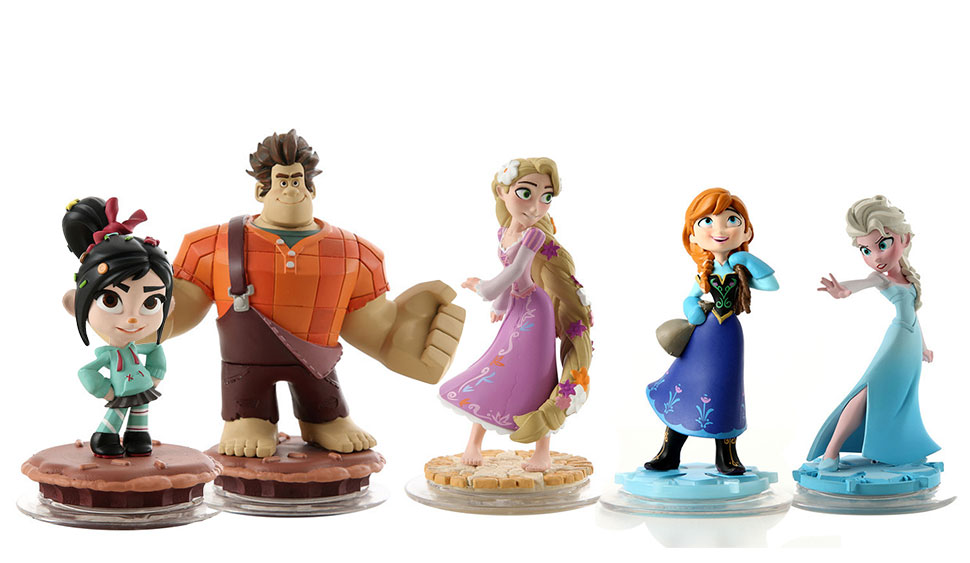
Had the two games been comparable, Skylanders might have been in trouble. But Disney Infinity did not share the same gameplay structure. Rather than an overarching story featuring all of the characters available for purchase as toys, a series of adventure playsets were released. These playsets, based on popular Disney properties (plus The Lone Ranger) were generally short adventures set in smallish stages that were exclusive to toys matching their theme. A Cars character could not visit The Pirates of the Caribbean playset.
Characters without playsets, like Mickey Mouse or the sisters from Frozen, could only be played in the game’s Toy Box mode. Toy Box mode was a place where players could use Disney-themed tools to create their own adventures. Though the amount of space in each Toy Box was limited, within those confines players could build race tracks, vast jungle fortresses, dungeons, castles, villages teeming with tiny non-player characters. Using a simple built-in visual programming language players could even create their own Toy Box games.
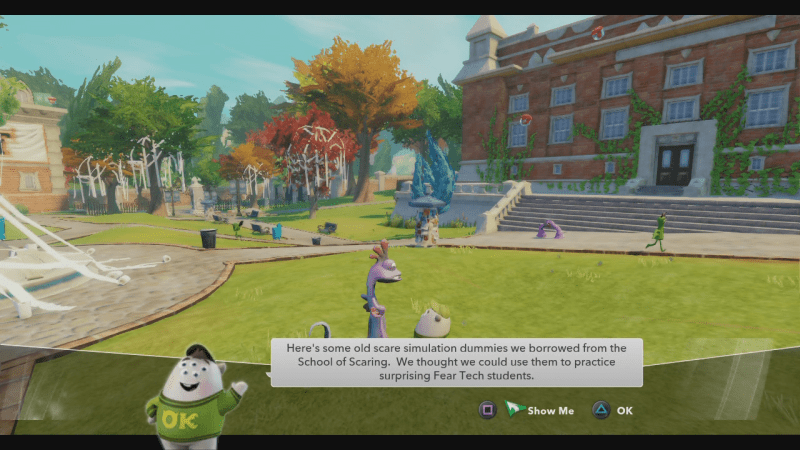
The toys looked amazing. The Toy Box mode was a delightful creative outlet. The actual gameplay was a massive missed opportunity. Characters from all corners of the Disney entertainment universe coming together, only to remain separated in the official adventures created for the game. Disney and developer Avalanche Software had the opportunity to create something as beloved and enduring as Square Enix’s Kingdom Hearts series. Instead they created a series of unrelated events sharing a central design. It was like picking up a book with a cover showing all of your favourite characters, only to discover it was just a short story anthology.
In 2014, Disney Infinity 2.0 introduced Marvel superhero characters to the series, which were pretty much the biggest selling point for the second instalment. Vast improvements were made to the game’s creative mode. Its more adventurous side did not fare nearly as well.
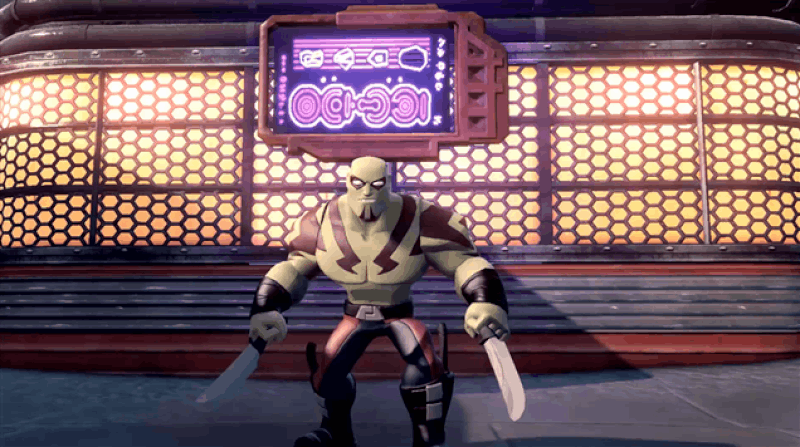
Only three playset levels were released for Disney Infinity 2.0. The Guardians of the Galaxy, Avengers and Ultimate Spider-Man playsets, each available at launch, demonstrated slightly enhanced gameplay (thanks to bringing on developer Ninja Theory to work on combat), but they were ultimately the same short, repetitive mission-based adventures we’d seen and played before.
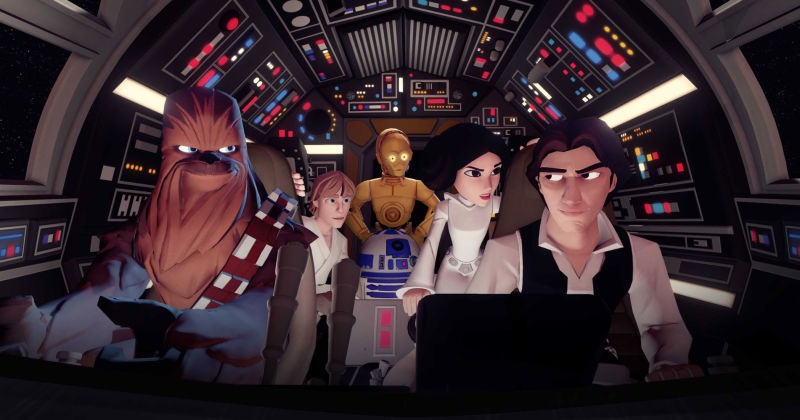
Disney Interactive Studios finally started to see the light somewhat with last year’s Disney Infinity 3.0. The focus this time around was Star Wars. The three Star Wars based playsets featured much improved combat, tighter driving and piloting and lightsaber combat that wasn’t half bad, though structurally they were the same short, self-contained adventures as before.
But Avalanche and Disney Interactive also delivered the Toy Box Takeover game adventure, in which characters from each property join together to take down a common enemy. The Marvel Battlegrounds set turned the game into a 3D free-roaming fighter, going as far as to create all-new move sets for every Marvel Comics character in the game.
These were exactly the sort of experiences I was hoping to see Disney Infinity deliver. When they announced there would be no new instalment of the series this year in favour of creating new experiences with what the developers already had available, I was genuinely excited.
Alas, it looks like it was too little, too late.
Despite strong early sales (largely due to Star Wars fever), Disney Infinity 3.0 sales were a disappointment to Disney, especially compared to the returns seen from Star Wars: Battlefront, a licensed game the company was not directly publishing. From Disney’s first quarter 2016 fiscal report:
At Games, growth was due to higher licensing revenue from the success of Star Wars: Battlefront, partially offset by lower Disney Infinity results. The decrease from Disney Infinity was due to higher inventory reserves and lower unit sales volume.
The outlook was grim back in February. Then again it was also grim for Activision’s Skylanders. Superchargers, the most recent release, was cited for lower than expected sales in the company’s 2015 investor report. Despite disappointing sales, the same report also announced a new game coming in 2016 and an animated series starting in the fall. The latest entry into the toys-to-life category, LEGO Dimensions, just finished releasing its first year’s worth of toy-based content, with plans to announce more soon.
http://kotaku.com/disney-infinit…
Skylanders might not have the character recognition Disney Infinity had, and LEGO Dimensions might not have had three years to build up a fan base, but both soldier on in 2016. I can’t help but think those games’ strong gaming backbone made a big difference.
I will miss Disney Infinity, and I feel awful about the closure of Avalanche Software, but I’m hopeful that the end of Disney Infinity can be the beginning of something much better.
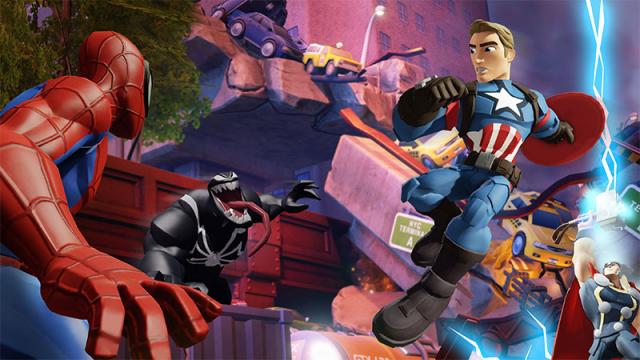
Comments
8 responses to “Disney Infinity Died Just As It Was Getting Good”
Man i was really looking forward to new chars 🙁
I was hoping that instead of having to re buy a game every release they would just turn the toys into DLC. Load in the new playset and install that part of the game and those characters.
Disney wants you to you know, move on…….to its next franchise.
There’s fan favourites and then there is following along exactly with how Disney wants you to be invested in their characters.
There’s a wealth of interesting history in how modern Disney has exploited (I mean that in a non-negative connotation) the toys market.
During the 90s, a little movie called Toy Story took everybody by surprise.
Even Disney.
Now, the ‘little indie’ toy manufacturer (by the standards of the day) that was tasked with assembling all the Woody and Buzz Lightyear figures was un-prepared for the massive hit the movie was going to be. They couldn’t supply enough with the demand (in the domestic US market at least).
Now, Disney made Toy Story 2 and even inserted a gag about ‘retailers didn’t order enough from the company that owns Buzz so they made a lot of kids sad’ – that is revisionist history because it was Disney that the buck stops with, not whichever mum-and-dad toy-maker they partnered with to handle merch for their Pixar experiment.
I encourage you to read up – I’ve probably got a few of the facts wrong – but the point is time and time again Disney miscalculates certain endeavours and will try to either explain it away with all the stuff it does do right, or flat out mask its failures.
This is also relevant again: http://www.mcvuk.com/news/read/disney-toy-shortages-are-irresponsible-and-rude-to-hardcore-fans/0150678
Never been a fan of that bloke but this sucks for his staff.
From what they were saying the characters may end up in Lego Dimensions.
Lego Dimensions – a one dimensional game that is exactly the same as any other TT Lego game apart from… oh wait, yeah its exactly the same as every other Lego game.
@shamrocks I get your comment, just frustrated that TT Lego may have “won” this battle.
So its fair to say they’re repetitive, but they’re aimed at kids. And im not sure if you were aware, but kids will play/watch the same thing over and over and over again and enjoy it as much the 50th time as they did the 1st.
The addition of new characters or vehicles or even new suits is enough to make most kids mega excited! And id say their business model is dealing with predominantly selling to kids.
(I have kids so i thought id throw my observation of their consumer habits in there)
(:
Very aware of viewing habits of kids (I have 3) – and yeah they are repetitive. That doesn’t make them “good” – at least not in my books (your mileage may vary). I agree with the point you make – TT games are still repetitive soulless games IMHO.
This is really sad news. Yes the game play was “kiddy”, the skill tree essentially meaningless.. but is that why we all forked out money on the game and action-figures? Nah, we wanted solid, meaty toys that not only worked as part of the game, but were an actual toy in their own right.
What I really loved was the ability to create “programmatic” worlds (using the myriad of increditoys) – just for the fun of it.
Final words… very sad when an Excel spreadsheet cell goes “red”, which means an accountant somewhere emails the CEO saying “hey, that product ain’t making us money no more – time to ditch it”. The real saddness is that same Excel cell also means “hey – go sack 300 people cause we can save some money”. Real short term thinking… 🙁